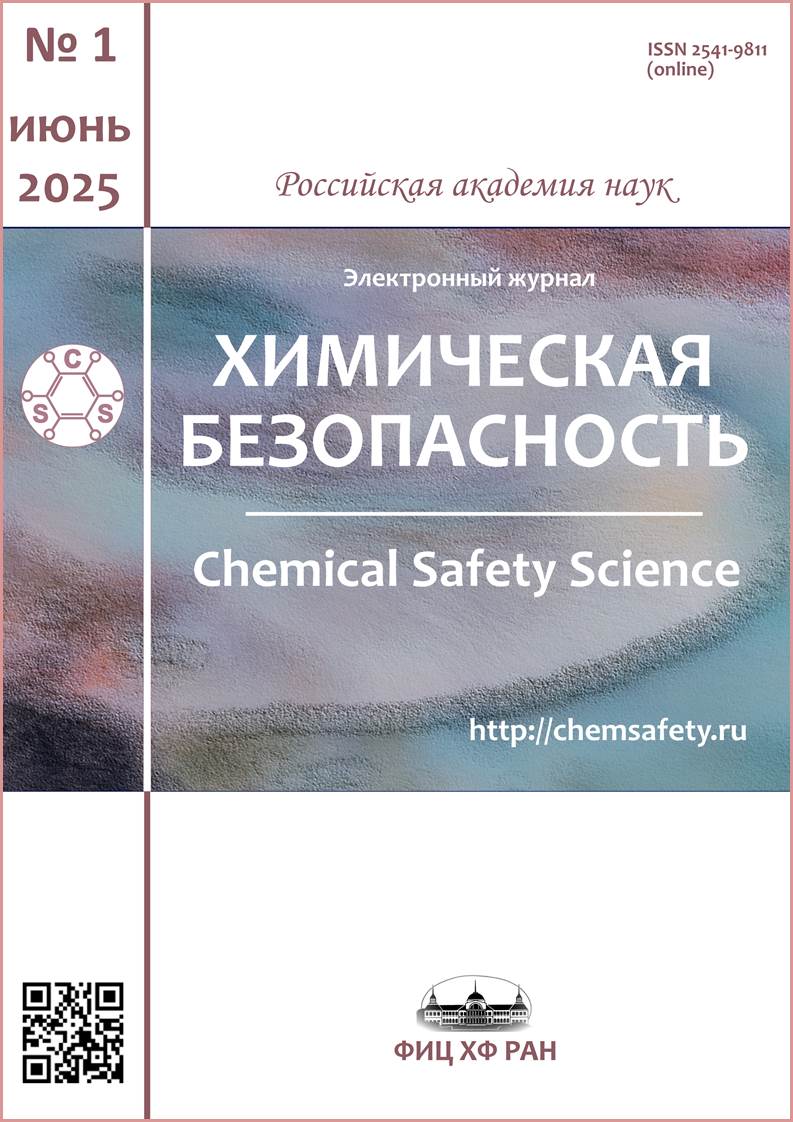Dependence of megacity aerosol pollution estimates based on the atmospheric electric field strength on the unperturbed conductivity profile
Abstract
Ultrafine particles are very harmful to human health, so it is extremely important to develop indirect methods for estimating the concentration of aerosol particles with sizes up to 0.1 µm in diameter in atmosphere. Aerosol particles and the atmospheric electric field strength are tightly related with each other what allows the electric field usage for such estimates. The impossibility of in situ measurements of altitude dependencies, especially for the conductivity function, necessitates a study on the dependence of the results obtained on the specific profile taken. In this study, numerical estimates of the parameters of the model for estimating aerosol concentration in the air on the basis of electric field strength values for three conductivity profiles proposed from literature sources are used: a profile consisting of a single exponent, a profile consisting of three exponents, and a profile that well reflects the characteristics affecting the electric field of the surface layer atmosphere. It is shown that the use of two close profiles reflecting the altitudinal inhomogeneity of the conductivity profile gives almost indistinguishable results, however, a very different profile strongly changes the obtained estimates (the particle concentration in a megacity changes by almost an order of magnitude).
References
Schraufnagel, D.E. (2020). The health effects of ultrafine particles. Exp. Mol. Med., 52, 311–317. https://doi.org/10.1038/s12276-020-0403-3.
Atmosphere. Handbook. Edited by Yu. S. Sedunov. (1991). L.: Hydrometeoizdat, P. 508 (in Russ.).
Morawska, L., Ristovski, Z., Jayaratne, R., Keogh, D.U. & Ling, X. (2008). Ambient nano and ultrafine particles from motor vehicle emissions: characteristics, ambient processing and implications on human exposure. Atmos. Environ. 42, 8113–8138. https://doi.org/10.1016/j.atmosenv.2008.07.050.
Plaude, N.O, Stulov, Ye.A., Parshutkina, I.P., Sosnikova, Ye.V. & Mohahova, N.A. (2013). Characteristics of atmospheric aerosol in the Moscow region. M.: Nauchn. mir, P. 80 (in Russ.).
Rybnov, S.Yu., Krasheninnikov, A.V., Soloviev, S.P. & Rybnov, Yu.S. (2024). Monitoring of the thermodynamic regime of atmospheric turbulence. Dynamic Processes in Geospheres, 16(1), 43–51 (in Russ.). http://doi.org/10.26006/29490995_2024_16_1_43.
Rybnov, Yu.S., Krasheninnikov, A.V., Soloviev, S.P. & Rybnov, S.Yu. (2023). Variations of geophysical fields during the eruption of the Hunga-Tonga-Hunga-Haapai volcano on January 15, 2022. Dynamic Processes in Geospheres, 15(1), 63–72 (in Russ.). http://doi.org/10.26006/29490995_2023_15_1_63.
Spivak, A.A., Gavrilov, B.G., Ryabova, S.A. & Tikhonova, A.V. (2024). On the possibility of formulating prognostic signs of dangerous atmospheric phenomena based on the analysis of variations of geophysical fields. Dynamic Processes in Geospheres, 16(4), 54–63 (in Russ.). https://doi.org/10.26006/29490995_2024_16_4_54.
Shvarts, Ja.M. & Oguraeva, L.V. (1987). Analysis of multiyear variations of atmospheric electricity values in the surface layer. Meteorology and hydrology, 7, 59–67 (in Russ.).
Jayaratne, E.R. & Verma, T.S. (2004). Environmental aerosols and their effect on the Earth’s local fair-weather electric field. Meteorol. and Atmosph. Physics, 86, 275–280. https://doi.org/10.1007/s00703-003-0028-9.
Sheftel, V.M., Chernyshev, A.K. & Chernysheva, S.P. (1994). Air conductivity and atmospheric electric fi eld as an indicator of antropogenic atmospheric pollution. J. Geophys. Res., 99, D5, 10793–10795. https://doi.org/10.1029/94JD00287.
Pustovalov, K.N., Nagorskij, P.M., Oglezneva, M.V. & Smirnov, S.V. (2024). The influence of wind direction on the ground electric field in Tomsk. Proceedings of the XXX Jubilee International Symposium “Atmospheric and Ocean Optics.Atmospheric Physics”, D125‒D129 (in Russ.).
Silva, H.G., Matthews, J.C., Conceição, R., Wright, M.D., Pereira, S.N., Reis, A.H. & Shallcross, D.E. (2015). Modulation of urban atmospheric electric field measurements with the wind direction in Lisbon. J. Physics. Conference Ser., 646(1), 012013. https://doi.org/10.1088/1742-6596/646/1/012013.
Krasheninnikov, A.V., Loktev, D.N. & Soloviev, S.P. (2018). Atmospheric electric field in megacity aerosol pollution conditions. Proceedings of SPIE - The International Society for Optical Engineering, 1083370. https://doi.org/10.1117/12.2502313.
Krasheninnikov, A.V., Loktev, D.N. & Soloviev, S.P. (2020). Megacity aerosol pollution and atmospheric electric field disturbances. Izvestiya, atmospheric and oceanic physics, 56(8), 759–772. https://doi.org/10.1134/S0001433820080046.
Krasheninnikov, A.V., Loktev, D.N. & Soloviev, S.P. (2024). Assessment of aerosol pollution in the city of Moscow based on measurements of the atmospheric electric field. Izvestiya atmospheric and oceanic physics, 60(8), 877–883. https://doi.org/10.1134/S0001433824701287.
Harrison, R.G. & Carslaw, K.S. (2003). Ion-aerosol-cloud processes in the lower atmosphere. Rev. Geophys., 41(3), 1012–1037. https://doi.org/10.1029/2002RG000114.
Morozov, V.N. (2011). Mathematical modeling of atmospheric-electrical processes taking into account the influence of aerosol particles and radioactive substances. SPb.: RGGM. P. 253 (in Russ.).
Morozov, V.N., Zajnetdinov, B.G., Zanukov, V.V. (2022). Influence of aerosol particles on the global electric circuit. System synthesis and applied synergetics. Collection of scientific papers of the XI All-Russian Scientific Conference, 304–309 (in Russ.). https://doi.org/10.18522/syssyn-2022-58.
Surkov, V. V. (2015). Pre-seismic variations of atmospheric radon activity as a possible reason for abnormal atmospheric effects. Annals of Geophysics, 58(5), A0554. https://doi.org/10.4401/ag-6808.
Kupovich, G.V., Morozov, V.N. & Shvarts Ja.M. (1998). Theory of the electrode effect in the atmosphere. Taganrog: TRTU. P. 124 (in Russ.).
Copyright (c) 2025 Alexey V. Krasheninnikov, Dmitry N. Loktev, and Sergey P. Soloviev

This work is licensed under a Creative Commons Attribution-NonCommercial 4.0 International License.












